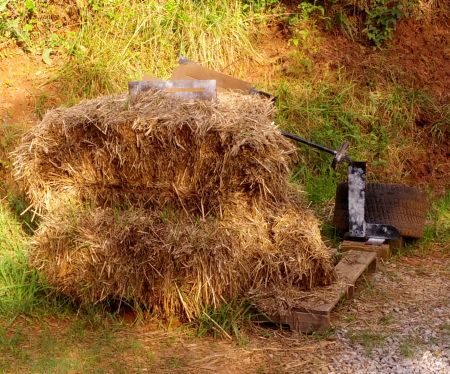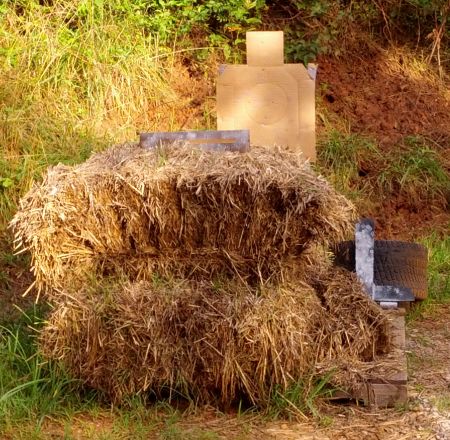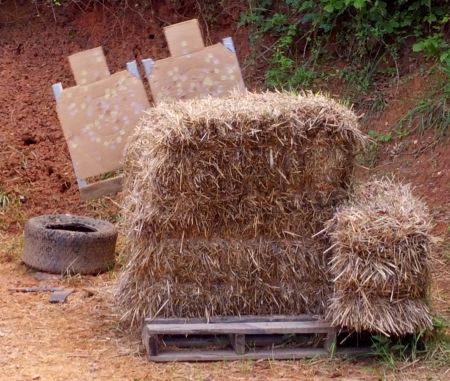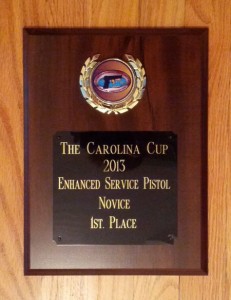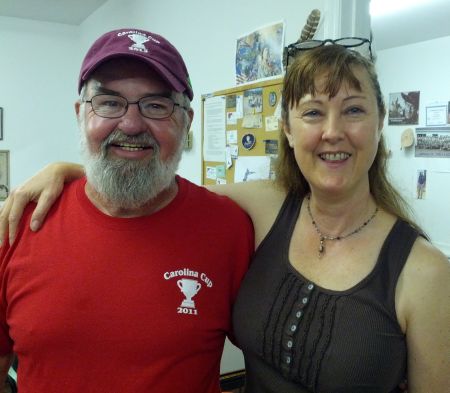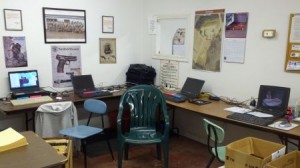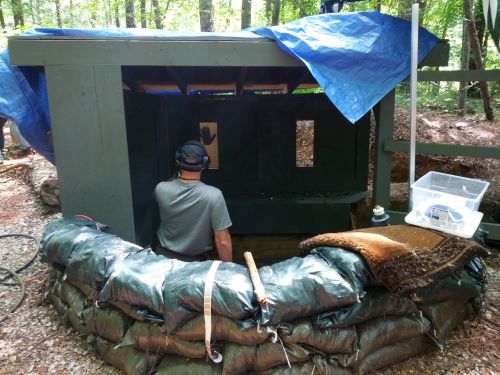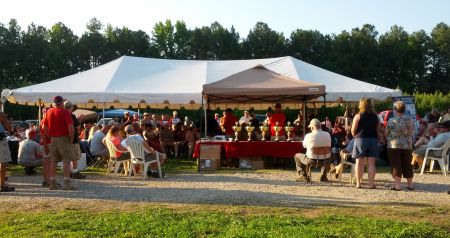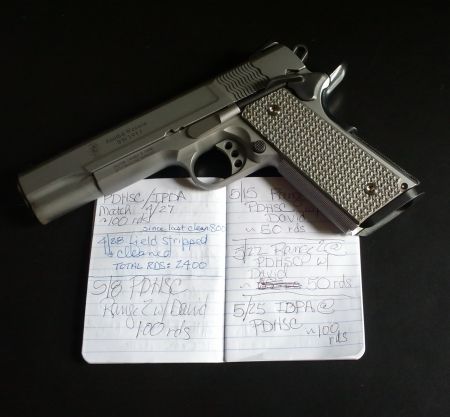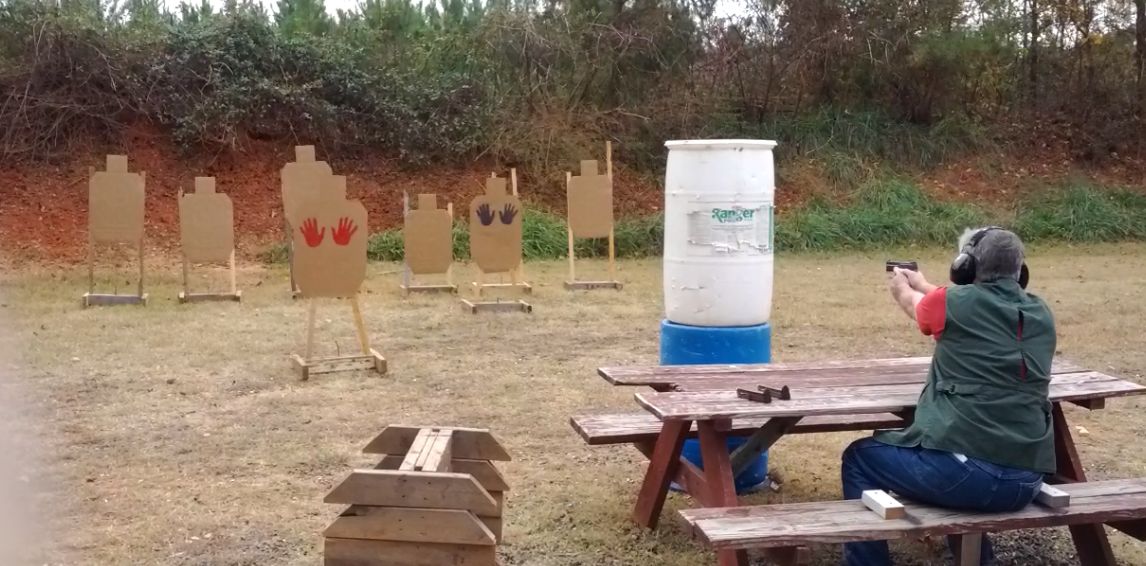
David shooting Stage 6 at The Range in Oxford. Note the wooden blocks restricting movement on the bench.
My friend David and I drove up to Oxford, NC to shoot in last Sunday’s IDPA match at The Range.. The equipment constraints and procedure rules are more restrictive than the Wake County Action Pistol Matches, but shooting an outdoor match brings different opportunities for learning — especially a match in Oxford.
The overall summary was:
- 6 stages
- under 90 rounds
- match briefing at 12:45pm
- finished our last stage around 3:45pm
- no malfunctions with my 1911!
All IDPA matches involve shooting and moving. At The Range in Oxford they can also involve shooting from a vehicle: in this case a very abused Toyota 4Runner.
Stage 5 featured the 4Runner. The scenario was basically: Start with your gun in the passenger seat of the vehicle. Shoot 6 targets near to far. Each target gets 2 shots. To achieve that, you needed to shoot two targets out the passenger window, two out the driver window, a 3rd target out the passenger window and back to the driver’s window for the final target.
As I sat in the 4Runner I realized a big person used to drive this vehicle in it’s better days because I sunk way down into that seat. From that position, the first target I needed to shoot was out of site on the passenger side toward the rear of the vehicle.
I thought I had a plan but when the buzzer when off, I picked up the gun with my strong hand and was able to see the first target. It was going to take some effort to slide forward and twist my entire body to get both hands on the gun, and the target was right there. I thought “reach out and touch it” and just lined up the shot with my strong hand and squeezed the trigger. I shot the 2nd target the same way then began to use both hands. For the first time ever I noticed a low shot and took a make up shot immediately.
I shoot slow. I always place close to last in every match. But I have fun shooting and in the this case had zero down. I was so happy I had a huge grin the rest of the day.
I also want to mention a few other lessons learned / observations:
– Stage 6 (see photo at the top) required the shooter to stay within the wooden blocks on the bench while shooting. In that case being small was an advantage. I had more wiggle room to line up my shots. I was down zero on that stage as well. I am thrilled with small victories like that!
– The last stage we shot, Stage 3, had rectangular steel plates partially blocking some of the targets. I’d never seen that before so I asked if they were non-threats. I was told they were “round eaters”. It was a limited vickers stage so if your shot hit the steel, it wasn’t going to hit the target. The ping of hitting steel also telegraphs your mistake to the entire squad. Oh joy… I managed to avoid all the steel and did a little victory dance in my head. Especially since the first 6 shots were weak hand only and the next 6 were strong hand only. The final 6 shots were head shots with both hands on the gun. I did manage to miss one head. Bummer.
– Finally, I got called for moving while reloading across an opening in cover. The RSO told me he was going to have to assess the penalty and my response was, “I was really moving while reloading? Go me! I had no idea I could do that. I’m happy to take the penalty.” He grinned and said “And it was a tactical reload too.” This is progress!
I checked the scores. I came in 3rd to last. As I said, I’m slow. Also, I admit that I really don’t practice much. I’ve had to think about why I shoot these matches and for now there are several reasons and none of them have anything to do with winning.
- Handle my gun safely on a regular basis
- Challenge myself with scenarios that require planning, moving and shooting
- Have fun!!! And I certainly achieved that!



